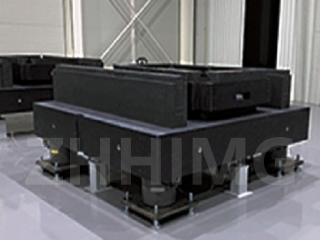Assembling, testing and calibrating granite components for semiconductor manufacturing process products is a crucial task. This is because the quality of these components determines the accuracy and precision of the entire manufacturing process. In this article, we will outline the steps involved in assembling, testing and calibrating granite components for semiconductor manufacturing process products.
1. Assembling Granite Components
The first step in assembling granite components is to make sure that you have all the necessary tools and materials required. The tools usually include a leveling instrument, a torque wrench, and a set of precision blocks. The materials required include granite components, screws and nuts, and a manual of instructions.
Before starting the assembly process, it is crucial to make sure that all the components you have are of the correct size and specifications, and that they meet the required standards. Once you have confirmed this, you can go ahead and assemble the components according to the manufacturer's instructions. It is important to use the correct torque settings for screws and nuts, as this will prevent over-tightening or under-tightening of the components.
2. Testing Granite Components
Once you have assembled the granite components, it is time to test them. Testing helps to ensure that the components are functional and are able to perform their intended tasks. There are different types of tests that can be performed on granite components, including dimensional inspection, surface plate flatness measurement, and squareness measurement.
Dimensional inspection involves checking the dimensions of the components against the required specifications. Surface plate flatness measurement involves measuring the flatness of the surface plate, which is crucial in determining the accuracy and precision of the entire manufacturing process. Squareness measurement involves checking the components' squareness, which is important for accurate alignment and positioning of the components.
3. Calibrating Granite Components
Calibrating granite components involves setting them to their correct operating parameters. This ensures that the components are able to perform their intended functions accurately and precisely. Calibration involves adjusting the components to ensure that they are operating within the required tolerance range.
To calibrate granite components, it is important to have a set of precision instruments and tools, such as electronic gauges, digital microscopes, and laser interferometers. These tools help to measure the components' dimensional parameters, angle measurements, and other critical parameters that are essential for calibration.
Conclusion
Assembling, testing, and calibrating granite components for semiconductor manufacturing process products requires precision, accuracy, and attention to detail. By following the steps outlined in this article, you can ensure that the components are assembled correctly, tested thoroughly, and calibrated accurately. This will help to ensure that the semiconductor manufacturing process products are of the highest quality and meet the required standards.
Post time: Dec-05-2023

